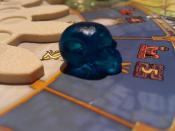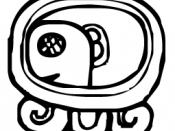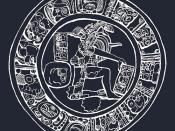Mayan Astronomy At a time when the homogeneousness of science and spirituality was virtually nonexistent in flourishing Christian Europe, the Mayans had developed a spiritual and literal view of their world based upon physical sciences and astronomy. Mathematically based Mayan astronomy, at its' advanced level, allowed ancient Mayans to live in a society where physical sciences were interdependent with spirituality. Regardless of whether or not the Mayan's instinctual connection between science and the sacred worldviews is any kind of evolutionary benefit, it gives them a unique feature that most other major civilizations at that time did not have. Rarely is it seen in an ancient civilization that a culture as a whole viewed their world the way that they did with mathematical roots; this was the case with the Mayans.
At the heart of all their astronomy and astrophysical views of their world was their vigesimal (base twenty) number system.
Being that their mathematical system was on vigesimal system the number 20 was regarded as sacred. Numerical ideographs consisting of lines and dots (lines representing 5 and a single dot representing 1) allowed the ancient Mayans to compute relatively complex math in a written form. In fact some of their computations were so complex as to leave one wondering if lost numerical and other such signs remain hidden in unexcavated soil. Despite the fact that Mayan mathematics lacked the use of fractions, it still allowed the Mayans to engineer calendar systems that to this day are too advanced to decipher and understand without a team of trained professionals.
The Mayans had at least 17 different calendars that they understood, however only three of them hold understandable significance to modern humans. The Haab calendar charts the cycles of the earth, the Tun-Uc calendar is the moon calendar, and the Tzolk-in is...


